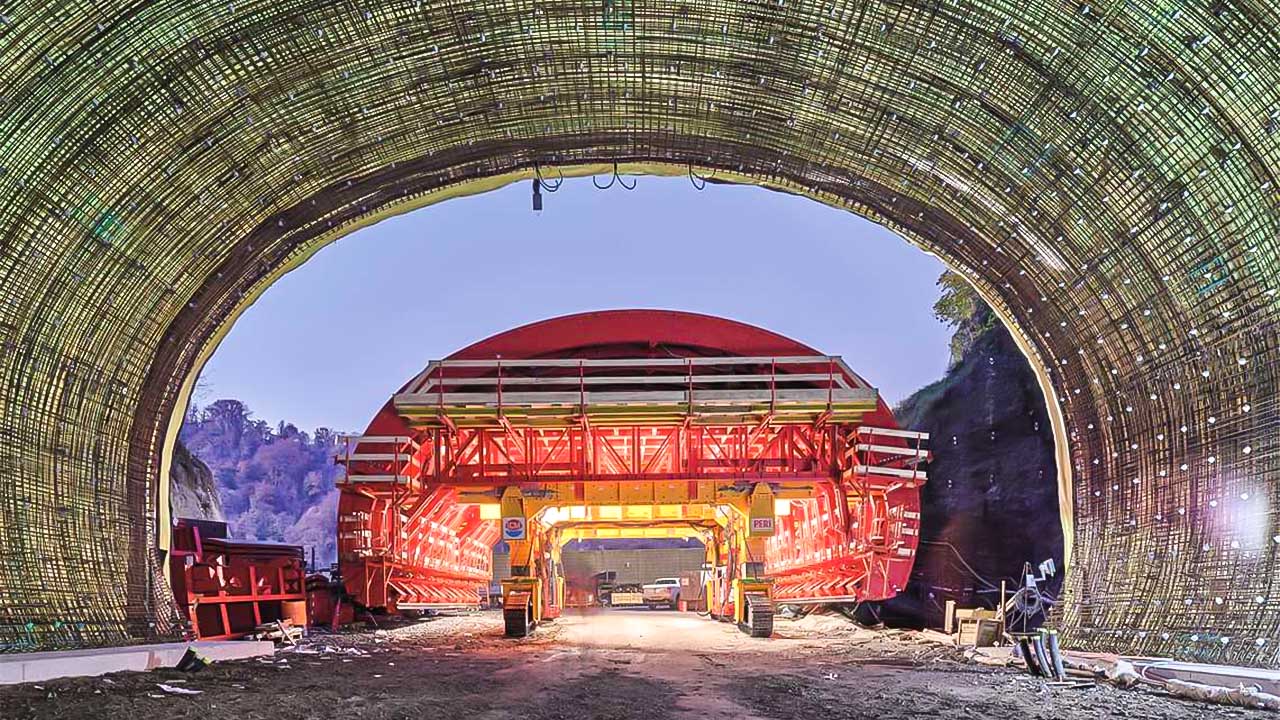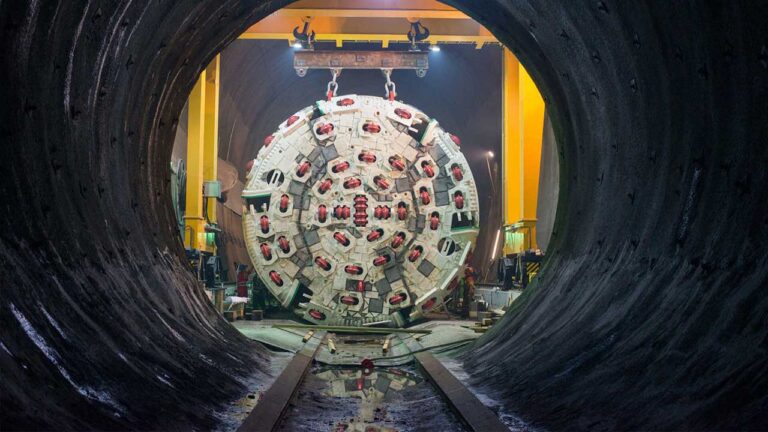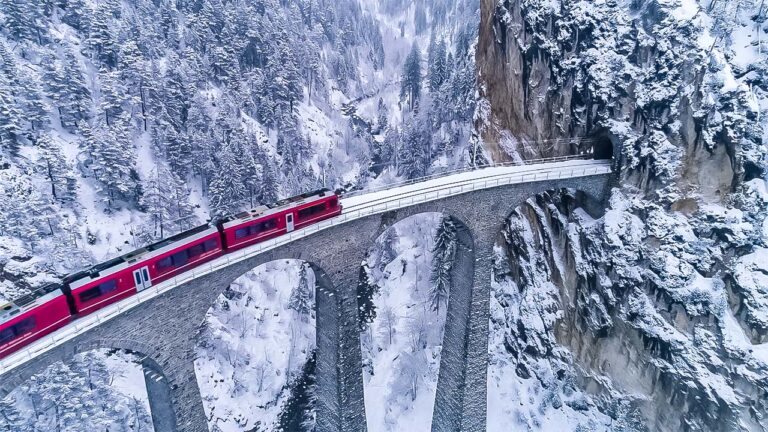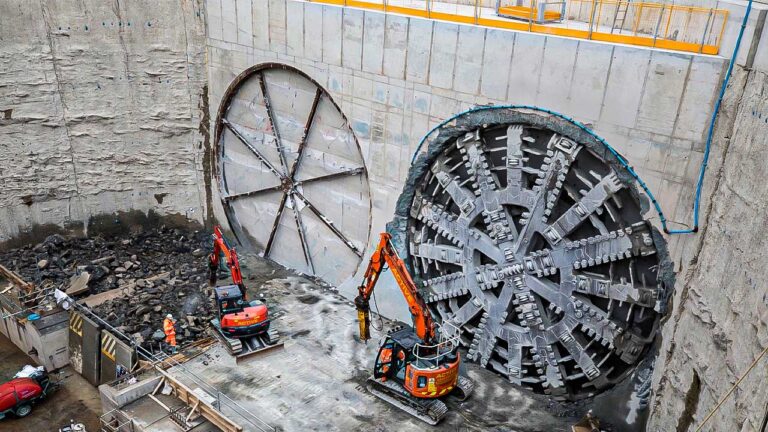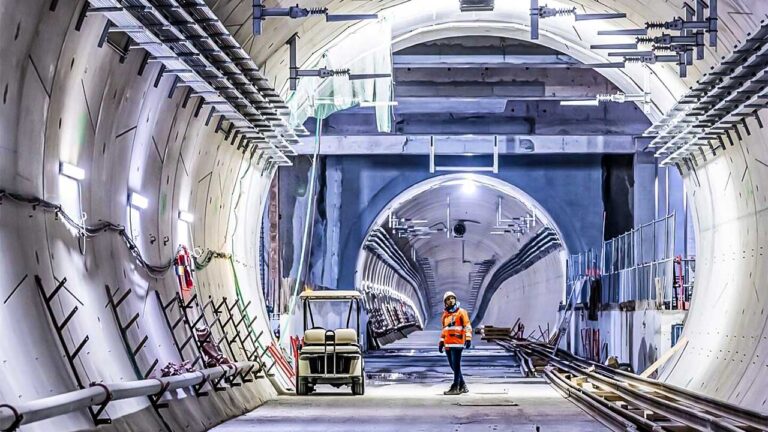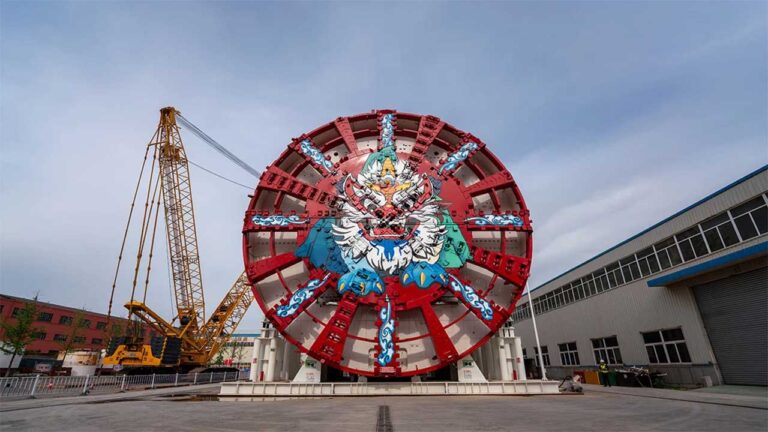Austria Constructs A26 LINZER AUTOBAHN Mega Tunnel with a New Giant Machine
The use of bridges and tunnels to facilitate transportation through difficult routes by road and rail has become very common around the world, but there are also a few mega-projects that make new history in the field of engineering.
So far, we have mentioned many such mega projects in our various videos which are completely unique and unparalleled in their kind. There are many masterpieces of construction engineers that are mind boggling, and today we are going to mention one such tunnel which is being hailed as a new addition to the world of modern construction.
Located on both sides of the Danube River in northwest Austria, Linz is famous for its Roman Catholic bishopric built in 1785, museums and art galleries, among other beautiful buildings. Due to the increasing population and the constant influx of tourists, traffic problems have increased here, to reduce which various projects have been constructed from time to time.
Though it is not difficult to get around in Linz either by tram, car or bicycle, but due massive solid rocks on both sides of the river, construction of roads for transportation to the northern and southern parts of the city is a challenge.
A construction project called the A26 Linzer Autobahn, i.e. 4-lane western bypass has been fast-tracked since January 2019 to reduce traffic pressure on the existing bridges built over the river, crossing one of the busiest waterways in Europe, as well as rail tracks and 2 highways.
Under A26 Linzer Autobahn project, the 305 Meter Long and 22.54-Meter-Wide suspension bridge under construction over the river will be connected with approximately 3.3 km long north-bound and south-bound junction twin tunnels on the valley side to link riverbank highways. The vertical rock slopes of the Danube Valley allow the 500 Meter Long and weigh around 900 Tons supporting cables for the suspension bridge to be anchored directly into the rock, eliminating the need for pylons.
Also Read: The $119 Billion Sea Wall to Protect New York City
This 4th bridge across the Danube River in the city is part of a major infrastructure development in the country. The mega structure is planned as a composite steel construction, with a steel box-girder and crossbeams spaced at the intervals of the hangers. The suspension cable bundles are composed of 12 parallel and locked spiral cables and have a diameter of 95mm. The hangers are also designed as spiral ropes and are connected to the suspension ropes by rope clamps manufactured as castings.
Building tunnels in hard rock mountains to connect this suspension bridge with the existing highways is not an easy task either.
Thus, the use of tunnel boring machine to construct tunnels in the mountains has become common. This giant machine also completes the initial construction of the concrete tunnel by excavating through the mountain. But this machine, which is about 50 Meters Wide and approximately 200 Meters Long, proves to be very expensive.
As for the project under construction in Linz, the tunnel boring machine is not useful enough to construct various turns on the 1600-Meter-Long route through solid rock along the bank of the Danube River.
In such a situation, instead of using TBM, the engineers decided to clear the tunnel path with the help of explosive materials. In this method, after drilling into the rock, explosives are placed in these holes and detonated. This process is continued until the tunnel is formed.
In construction of A26 Linzer Autobahn, a new method was adopted to prepare these tunnels, i.e. first the tunnel path was cleared by drill and blast with the debris taken away along the river by boats. Then, after installing the basic iron structure on the walls of the tunnel, concrete was sprayed on it to create initial stabilization.
A large part of the tunnel is built underground, to minimize noise and pollution in the urban area. According to the plan, these walls were covered with waterproof sheets, but this was only the base of the tunnel. After waterproofing the entire tunnel, it was now time for smooth finishing. In the next phase, the use of a 250-Ton Fully Hydraulic special-purpose steel machine called the Formwork Carriage was started. This machine was custom made for this mega project.
After dividing the entire tunnel into 180 sections, they were concreted in stages. Interestingly, the machine was trucked in parts to the site, where it was assembled. The workers assembled the machine according to the size of the tunnel so that it could move through the tunnel easily.
After the machine was inserted into the tunnel, it was adjusted again, so that it would be closer to the hard rocky walls. Finally the gap between the formwork and the walls was filled with concrete, resulting in a smooth lining in this section of the tunnel. After the work was completed, the formwork was stopped at the same place inside the tunnel for the next 24 hours, so that the machine could be moved to the next section after the concrete had dried thoroughly.
During this entire process, special care was taken to time and stop the machine, so that all sections of the tunnel could be completed equally. Even a short delay during this time could have ruined the whole project.
Also Read: 10 Construction Megaprojects will be Completed in 2024
The chief engineer of the project says that the most difficult phase of the tunnel construction project was the lack of space required during the work. Because the inner part of the machine was very narrow compared to the outer curve, it was forced to spend more time pumping concrete on both sides.
The length of the formwork could simultaneously pump concrete to a 12 Meter space. A few tight bends in the route allowed the worker to use half of the machine, creating 6 meters of concrete curves in the tunnel.
Due to the tight turning radius in the tunnel, an advanced caterpillar system was used to move the formwork machine. Due to this slow but very careful process, the construction of various angle bends in the tunnel was completed.
Engineers say that throughout the project, they faced new challenges every day, which forced them to think about the best solutions. The happiness is that the tunnel will benefit millions of people after its completion, but all the engineers and workers who worked day and night on this difficult and complex project may not be remembered by anyone.
The project will be completed by October 2024 as per the schedule of about 49 Months. This is one of the many mega projects that are reshaping the world with the power of construction.
Of course, you know that the world’s first tunnel was built in the Greek island of Samos in 530 BC to supply water to the capital of the island. One of the three wonders of the Hellenic world, this tunnel was 1 kilometer long. In terms of transportation, the Butterly Gangroad Line Railway Tunnel in England is the oldest surviving tunnel in the world.
The A26 project stands as a crucial infrastructure initiative in the Austrian city of Linz and its neighboring regions, aiming to alleviate traffic congestion within its urban transport system. The successful execution of the project relied on a cutting-edge PERI Engineering Solution that seamlessly blended innovation, safety, and efficiency, complemented by extensive project support. Notably, a significant milestone was achieved with the introduction of Austria’s inaugural fully hydraulic tunnel formwork carriage featuring a caterpillar drive.
Many tunnels built in the mountains are considered monuments in history till date. What do you think is the most complex tunnel ever built around the world?

